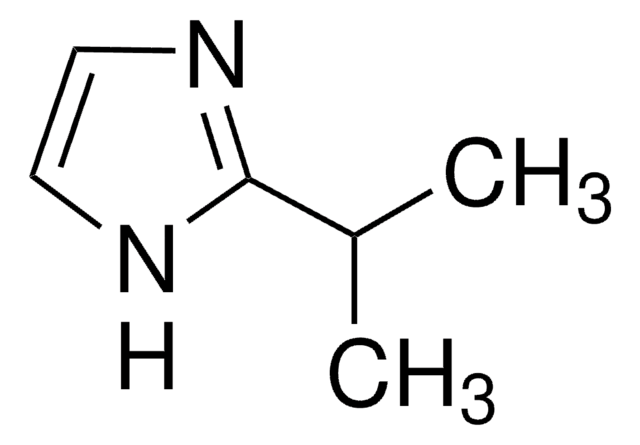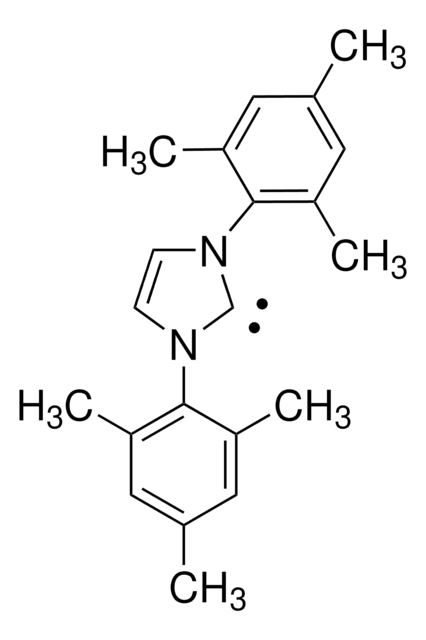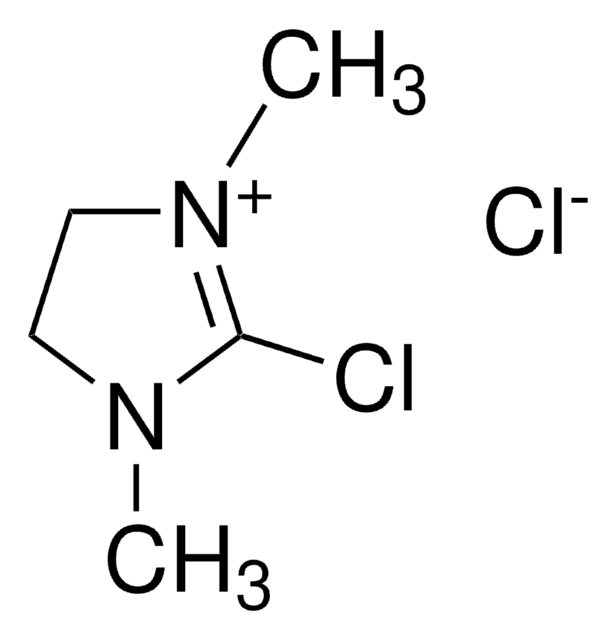656577
1,3-Diisopropylimidazolium chloride
97%
Synonym(s):
N,N′-(Isopropyl)imidazolium chloride
About This Item
Assay
97%
form
solid
reaction suitability
reagent type: catalyst
greener alternative product characteristics
Catalysis
Learn more about the Principles of Green Chemistry.
sustainability
Greener Alternative Product
mp
182-186 °C
greener alternative category
SMILES string
[Cl-].CC(C)n1cc[n+](c1)C(C)C
InChI
1S/C9H17N2.ClH/c1-8(2)10-5-6-11(7-10)9(3)4;/h5-9H,1-4H3;1H/q+1;/p-1
InChI key
DOFXKPAOJLLPII-UHFFFAOYSA-M
General description
Application
- 1,3-Diisopropylimidazole-2-thione by reacting with sulfur in the presence of potassium carbonate.
- (C9H7)NiCl(1,3-diisopropylimidazol-2- ylidene) by reacting with bis-indenyl nickel-(II).
- Ruthenium N-heterocyclic carbene complexes, which are efficient catalysts for the amidation of primary alcohols and amines.
Amide Synthesis from Alcohols and Amines by the Extrusion of Dihydrogen
Signal Word
Warning
Hazard Statements
Precautionary Statements
Hazard Classifications
Eye Irrit. 2 - Skin Irrit. 2 - STOT SE 3
Target Organs
Respiratory system
Storage Class Code
11 - Combustible Solids
WGK
WGK 3
Flash Point(F)
Not applicable
Flash Point(C)
Not applicable
Personal Protective Equipment
Certificates of Analysis (COA)
Search for Certificates of Analysis (COA) by entering the products Lot/Batch Number. Lot and Batch Numbers can be found on a product’s label following the words ‘Lot’ or ‘Batch’.
Already Own This Product?
Find documentation for the products that you have recently purchased in the Document Library.
Customers Also Viewed
Protocols
Acetylene chemistry has been and remains an important constituent element of molecular sciences. Its potential and widespread applications extend from organic synthesis through materials science to bioorganic chemistry. Some examples are enediynes (DNA-cleaving agents), ‘click chemistry’ tools and building blocks. Consequently, it triggers a demand for efficient syntheses of alkynes.
Information on the Amide bond and the Catalytic Amide Bond Formation Protocol. Amidation of amines and alcohols. The amide bond, an important linkage in organic chemistry, is a key functional group in peptides, polymers, and many natural products and pharmaceuticals.
Our team of scientists has experience in all areas of research including Life Science, Material Science, Chemical Synthesis, Chromatography, Analytical and many others.
Contact Technical Service




